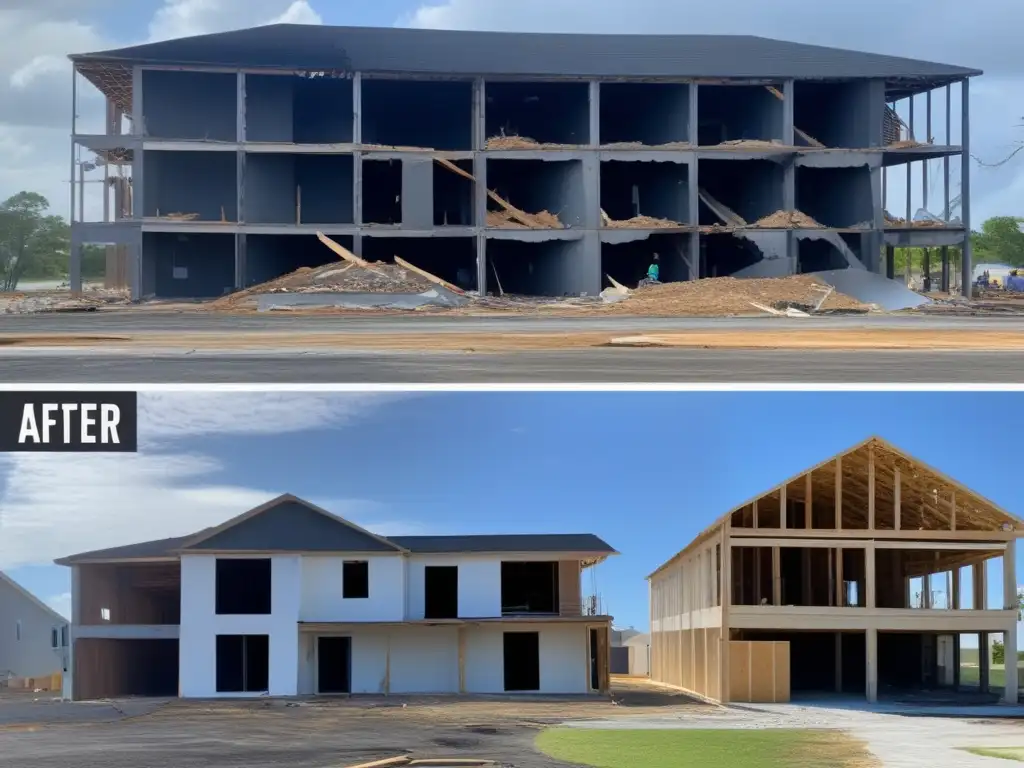Replanting Your Garden After A Hurricane

Replanting Your Garden After a Hurricane: Basic Knowledge About Hurricanes
Introduction
Hurricanes can cause massive destruction to homes, properties, and gardens alike. If you're someone who enjoys gardening, it's particularly disheartening to see your hard work ruined by a natural disaster like a hurricane. However, it's important to understand that there are steps you can take to replant your garden after a hurricane. In this article, we'll discuss some basic knowledge about hurricanes and provide tips on replanting your garden after a hurricane.
The Basics of Hurricanes

What is a Hurricane?
A hurricane is a massive storm that forms over warm ocean waters. It is characterized by strong winds, heavy rain, and storm surges that can cause flooding in coastal areas. Hurricanes are classified based on their wind speed, with Category 1 being the lowest and Category 5 being the highest.
What Causes Hurricanes?
Hurricanes form when warm, moist air rises over the ocean and cools, causing condensation and the formation of clouds. As more warm air rises, it creates a loop of swirling winds called a tropical disturbance. If the tropical disturbance continues to grow, it can develop into a tropical depression, then a tropical storm, and eventually a hurricane.
How Do Hurricanes Impact Gardens?
Hurricanes can cause extensive damage to gardens by uprooting trees, breaking branches, and flooding the soil. Strong winds can also scatter debris, such as leaves and twigs, all over your garden. The excessive water from the rain and flood can drown plants, affect soil health, and even cause pests and diseases to thrive.
Replanting Your Garden After a Hurricane

Assess the Damage
Before you start replanting, it's essential to assess the damage that has been done to your garden. Identify the trees, plants, and shrubs that have survived and those that need to be removed. Check for any structural damage to sheds, fences, or other garden structures.
Clear Debris and Remove Dead Plants
Once you've assessed the damage, clear out all the debris, including leaves, branches, and rocks. You should also remove any dead plants, stumps, and trees. This process will help you see which areas of your garden need attention and which areas need to be replanted.
Test Your Soil
Heavy rains and floods caused by hurricanes can affect soil quality. Therefore, it's important to test your soil before replanting. Soil tests can determine your soil's pH level, nutrient levels, and organic matter content. Based on the results, you can add fertilizers or other necessary soil amendments to improve soil health.
Choose Plants Resistant to Hurricanes
When replanting after a hurricane, it's crucial to choose plants that are resistant to hurricanes and can survive strong winds and heavy rains. For example, some plants and trees that are hurricane-resistant include Florida privet, crape myrtle, and live oak. You can also consider planting annuals and perennials that can withstand harsh weather conditions.
Replant Smartly
When replanting, be sure to plant trees and shrubs in a way that will maximize their stability. Consider planting them in clusters instead of across the yard, as this will protect them from strong winds. You can also use stakes and ties to secure the plants until they establish their roots.
Maintain Your Garden
After replanting, it's essential to maintain your garden regularly. Ensure that you water your plants adequately, especially during dry periods. Also, apply fertilizers and other necessary soil amendments to improve soil health. Regular maintenance will help your garden recover from the hurricane's impact and thrive.
Frequently Asked Questions

-
How can I replant my garden after a hurricane?
To replant your garden after a hurricane, assess the damage, clear debris, remove dead plants, test your soil, choose hurricane-resistant plants, replant smartly, and maintain your garden regularly.
-
What are some hurricane-resistant plants?
Some hurricane-resistant plants and trees include Florida privet, crape myrtle, and live oak. You can also consider planting annuals and perennials that can withstand harsh weather conditions.
-
Why is it important to test my soil after a hurricane?
Heavy rains and floods caused by hurricanes can affect soil quality. Therefore, testing your soil after a hurricane can help you determine your soil's pH level, nutrient levels, and organic matter content, and add fertilizers or other necessary soil amendments to improve soil health.
-
How can I maximize my plants' stability when replanting after a hurricane?
You can plant trees and shrubs in clusters instead of across the yard, use stakes and ties to secure the plants until they establish their roots, and choose hurricane-resistant plants that can survive strong winds and heavy rains.
-
Why is it important to maintain my garden regularly after replanting?
Regular maintenance will help your garden recover from the hurricane's impact and thrive. Ensure that you water your plants adequately, apply fertilizers and other necessary soil amendments to improve soil health, and prune your trees and shrubs regularly.
Conclusion
In conclusion, replanting your garden after a hurricane is possible with the right knowledge and tools. Assess the damage, clear debris, remove dead plants, test your soil, choose hurricane-resistant plants, replant smartly, and maintain your garden regularly. It's essential to remember that recovering from a hurricane takes time, so be patient and do not hesitate to ask for professional help if needed. By taking these steps, you can restore your garden's beauty and contribute to the recovery efforts in your community.
Additional Resources

- Better Homes & Gardens: Hurricane Tips for Replanting the Garden
- University of Florida IFAS Extension: Hurricane-Resistant Trees for Home Landscapes
- University of Florida IFAS Extension: Soil Testing and Plant Analysis
 Reopening Your Business After A Hurricane
Reopening Your Business After A Hurricane Supporting Friends And Family Through Post-Hurricane Recovery
Supporting Friends And Family Through Post-Hurricane Recovery Saving Memories: Preserving Personal Items Damaged In A Hurricane
Saving Memories: Preserving Personal Items Damaged In A HurricaneIf you want to discover more articles similar to Replanting Your Garden After A Hurricane, you can visit the Hurricane recovery: category.
Leave a Reply

Articulos relacionados: